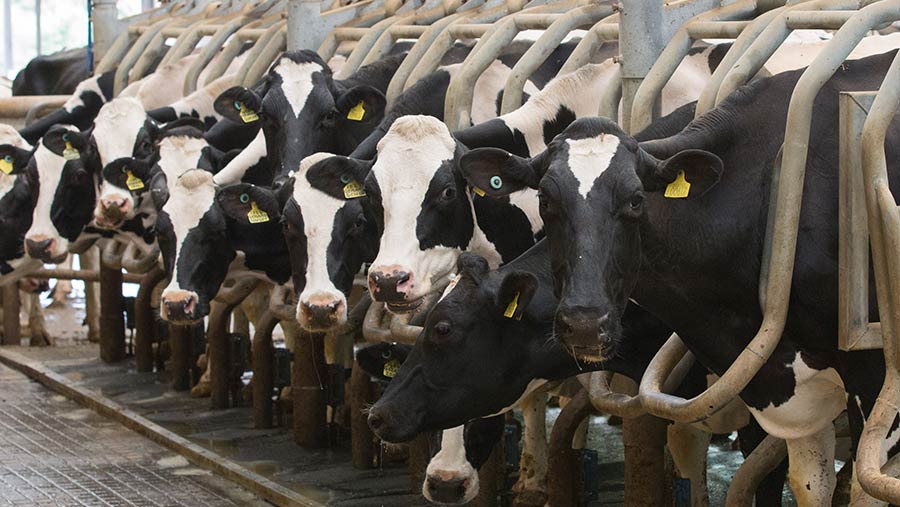Muller kicks off 2019 with milk price cut
 © Tim Scrivener
© Tim Scrivener Muller Direct milk suppliers will start 2019 with a 1p/litre price drop, to 27.5p/standard litre.
The price cut reflected continuing declines in the market value of dairy commodities including cream and butter, the processor said.
Following cheesemaker Barber’s 1p/litre cut for January, announced earlier this week, Muller’s move shows that the liquid milk market will also start the New Year under pressure.
Muller milk supply director Rob Hutchison said: “We are continuing to see declines in returns from markets for cream and butter and like most processors exposed to the liquid milk sector, we are not in a position to ignore market realities.”
See also: Animal medicine updates and advice
In spring this year, Muller introduced a contract option allowing farmers to fix their milk price at 28p/litre on up to 50% of their milk for three years.
More than a third of the 700 Muller Direct farmers opted to commit to this fixed-price contract.
More recently Muller announced a 0.5p/litre premium from 1 January for its 700 non-aligned dairy farmer suppliers who take part in three of the milk buyer’s herd health initiatives.
Muller Direct producers must take part in the Muller Farm Insight Programme, the Muller Antibiotic Programme and the National Johne’s Management Plan to be eligible for the price premium, which will deliver 28p/litre for January milk to those qualifying.
The 0.5p/litre premium will be paid annually in arrears.
Expert market analysis from senior commodity analyst Peter Meehan, of broker Intl FCStone
Volatility remained high in global dairy markets over the past week, with New Zealand data weighing on market sentiment.
New Zealand milk production in October (its peak milk producing month) posted a new record, putting collections after five months of its 2018-19 season 5.8% ahead of last year.
New Zealand’s pasture growth conditions have also been exceptionally good for the season to date, which has led to the expectation that strong milk production will continue over the coming weeks.
The country’s dairy exports were rather negative in October, with whole milk powder (New Zealand’s biggest dairy export) and skim milk powder (SMP) exports down sharply compared with last year, which may also weigh on the global commodity market.
Closer to home, milk production in Europe for September showed the effects of the hot, dry weather experienced earlier this year, with collections down slightly on 2017.
Lower milkfat and protein content pulled EU milk solid collections down even further for the month.
EU dairy export numbers for September, meanwhile, were quite robust, with SMP exports particularly strong.
This, coupled with further-diminishing Intervention SMP stocks, appears to be supporting SMP prices both on the physical and futures markets.
